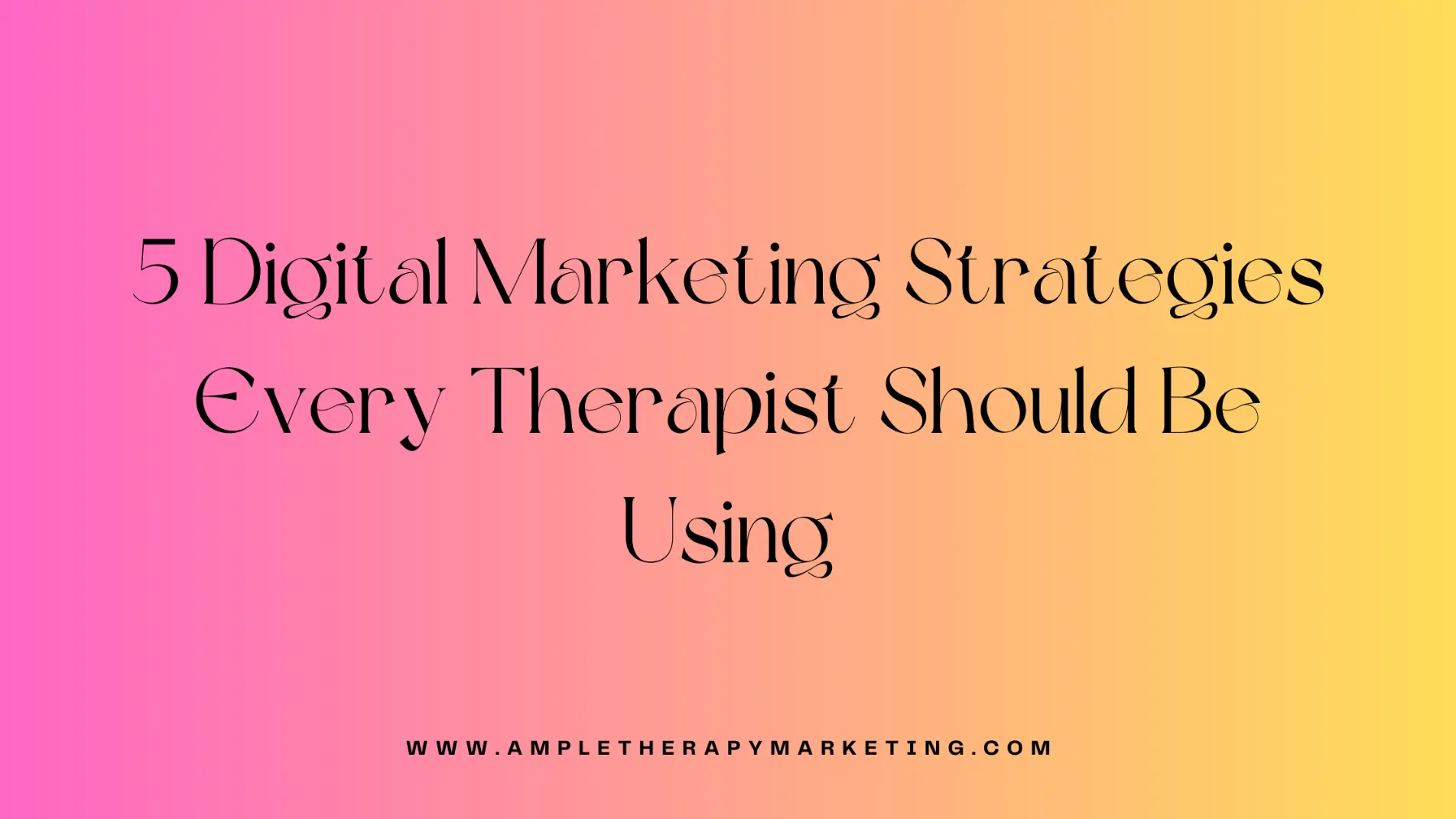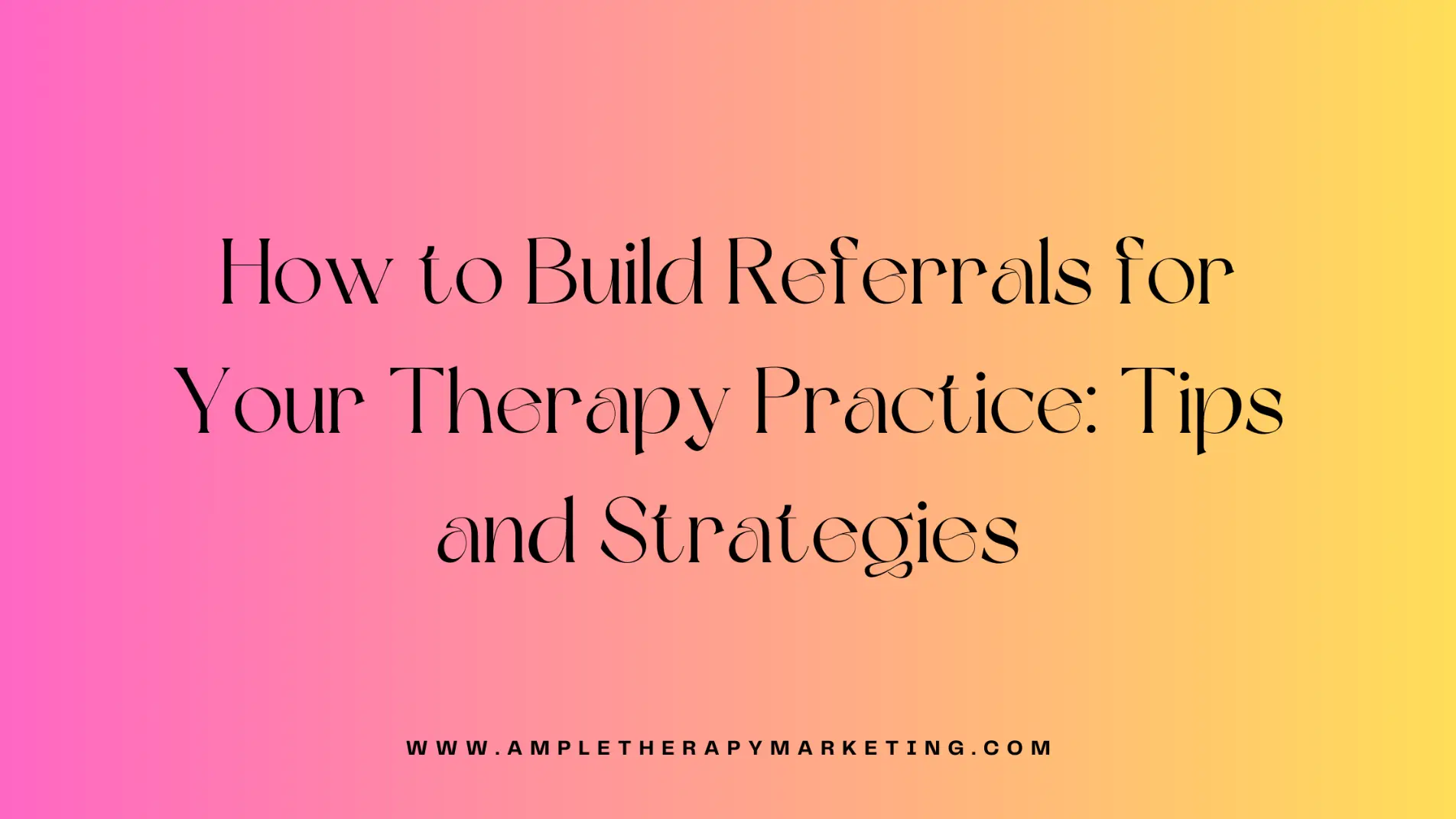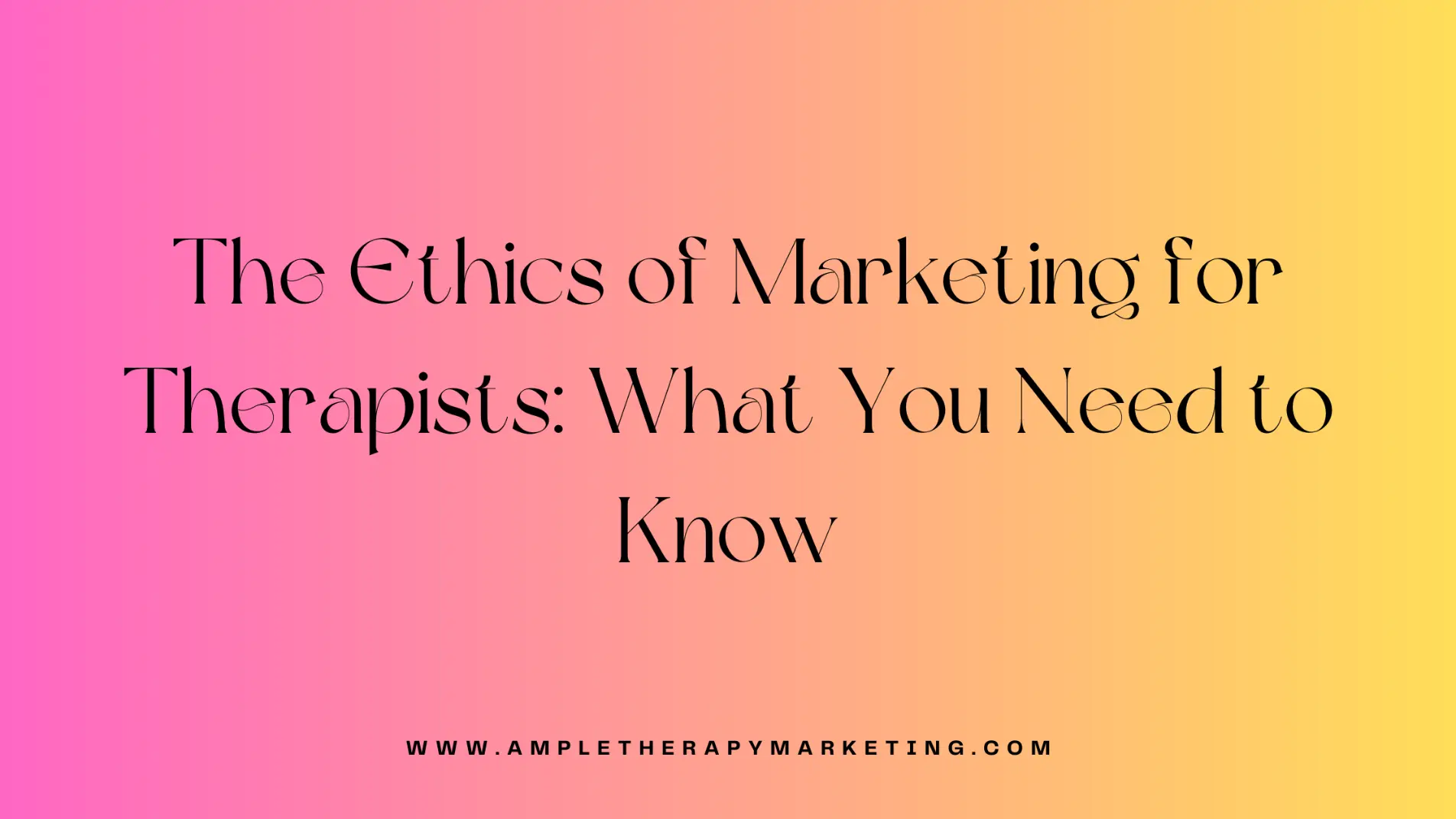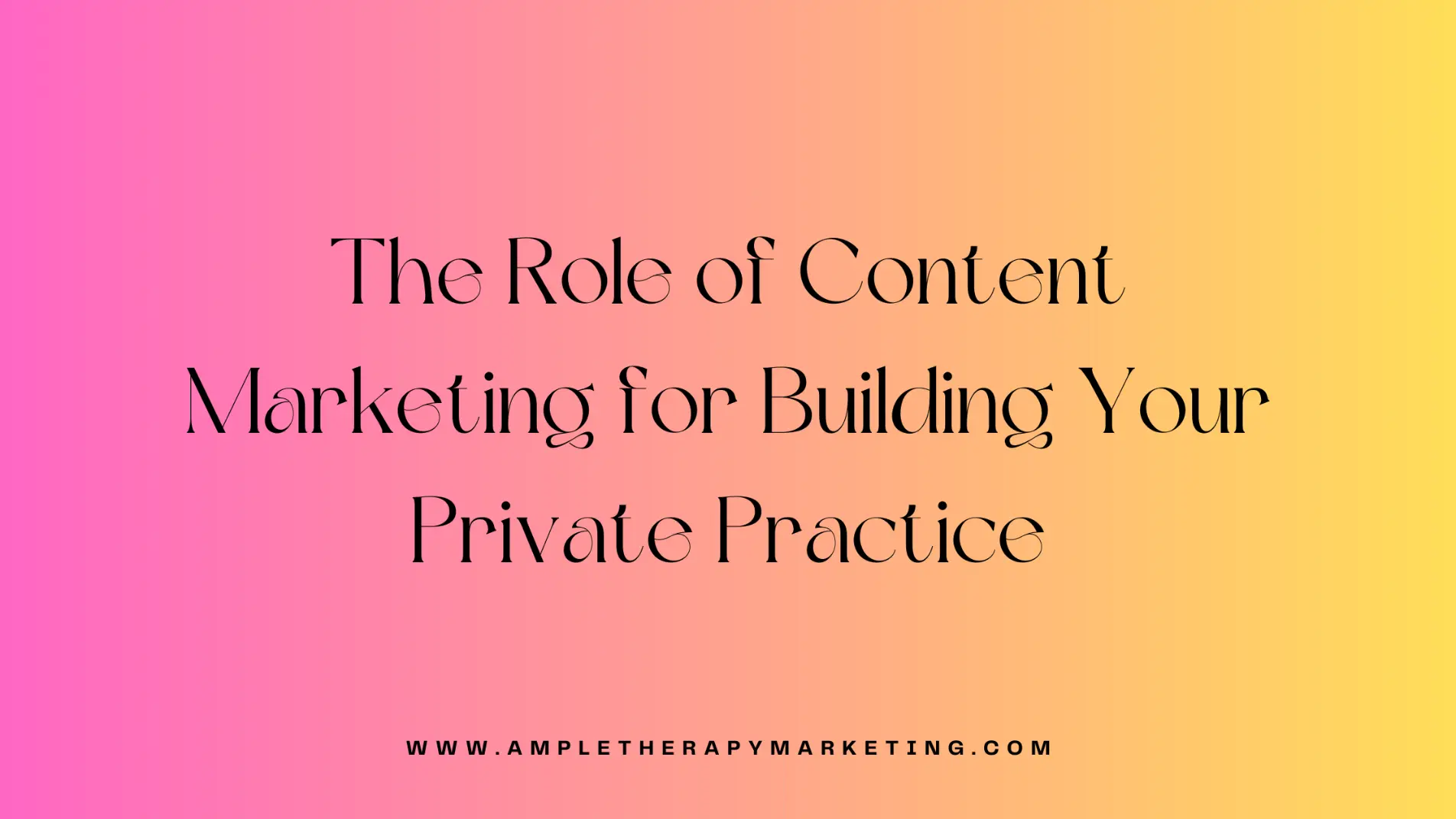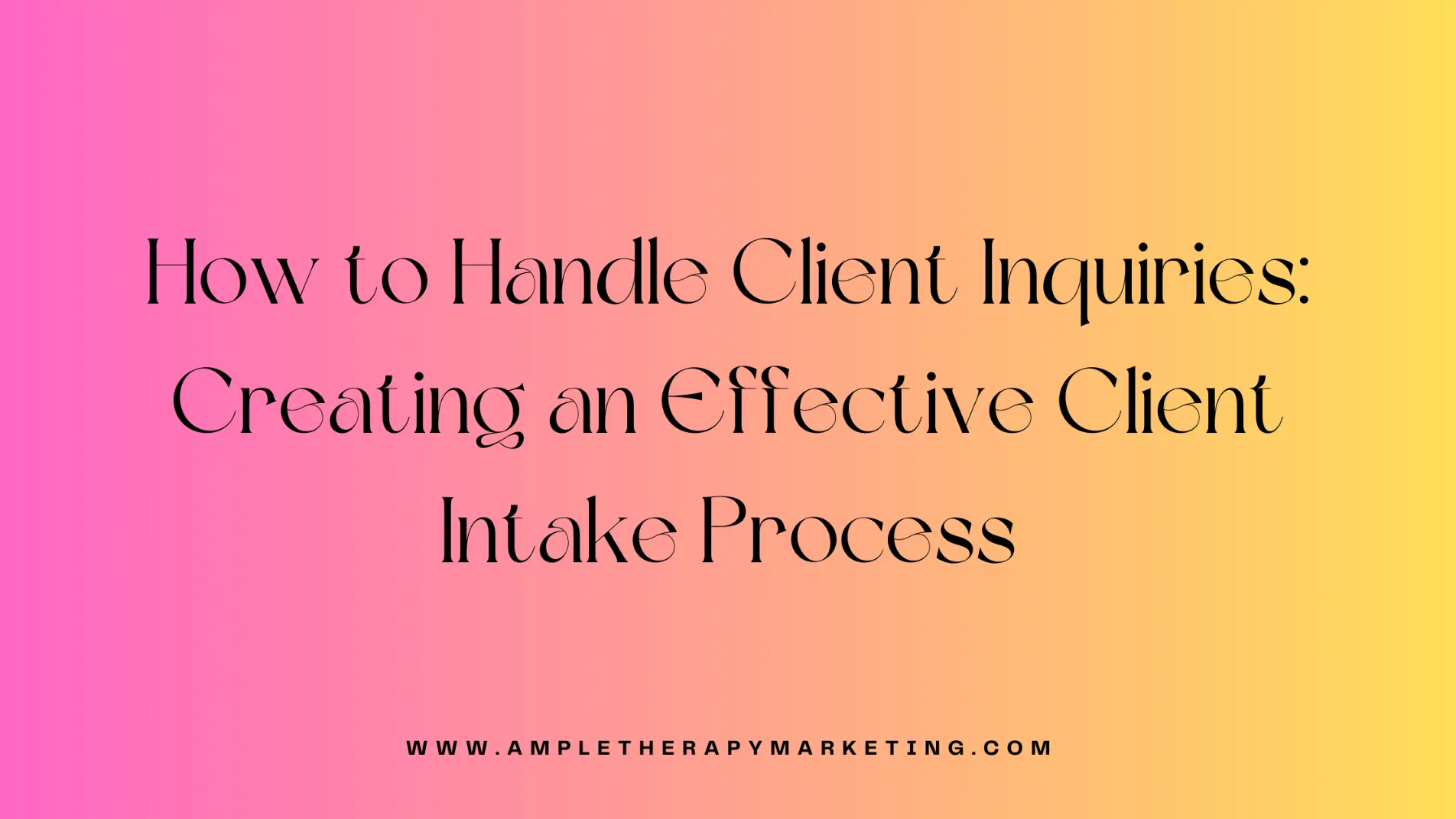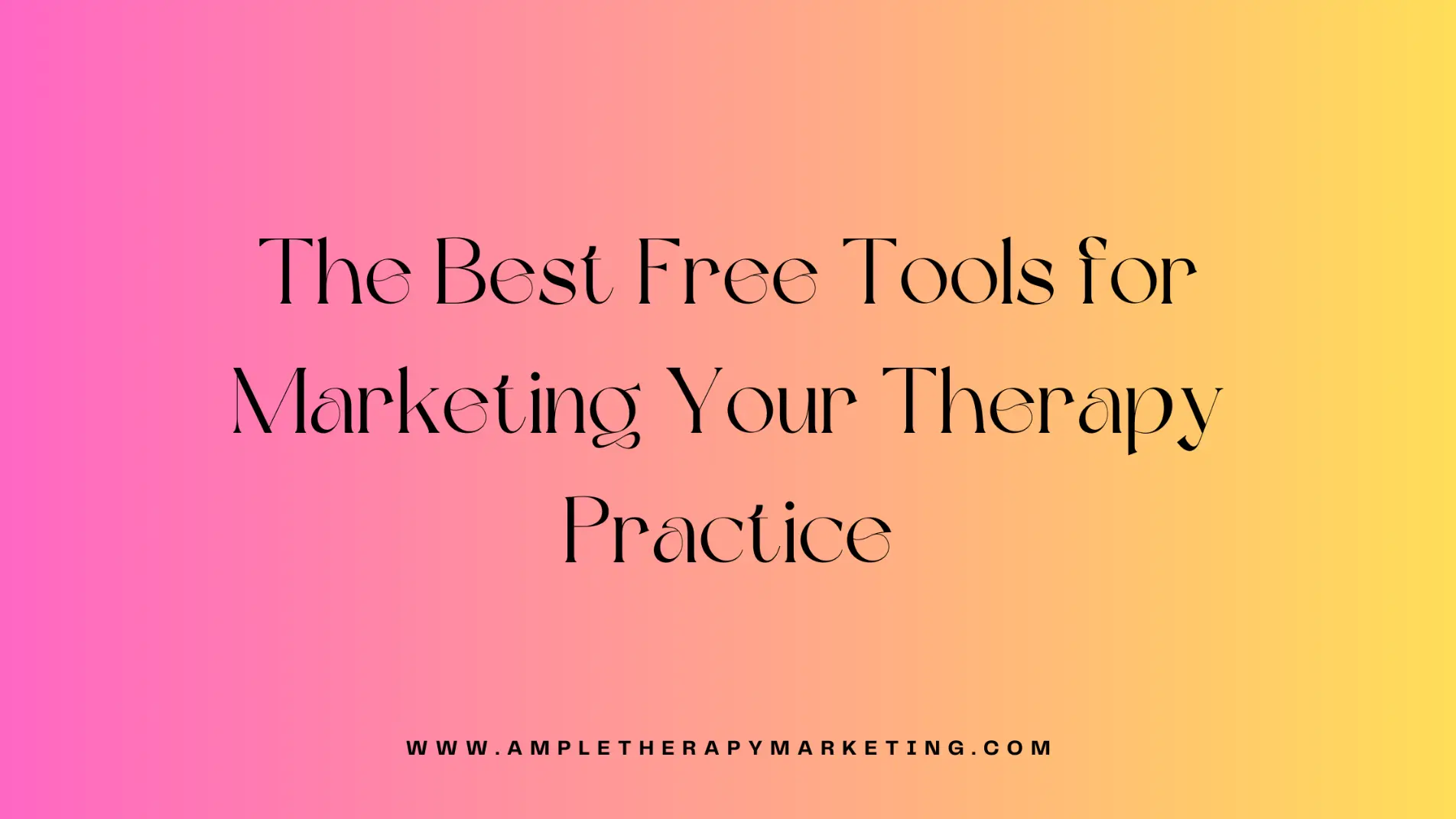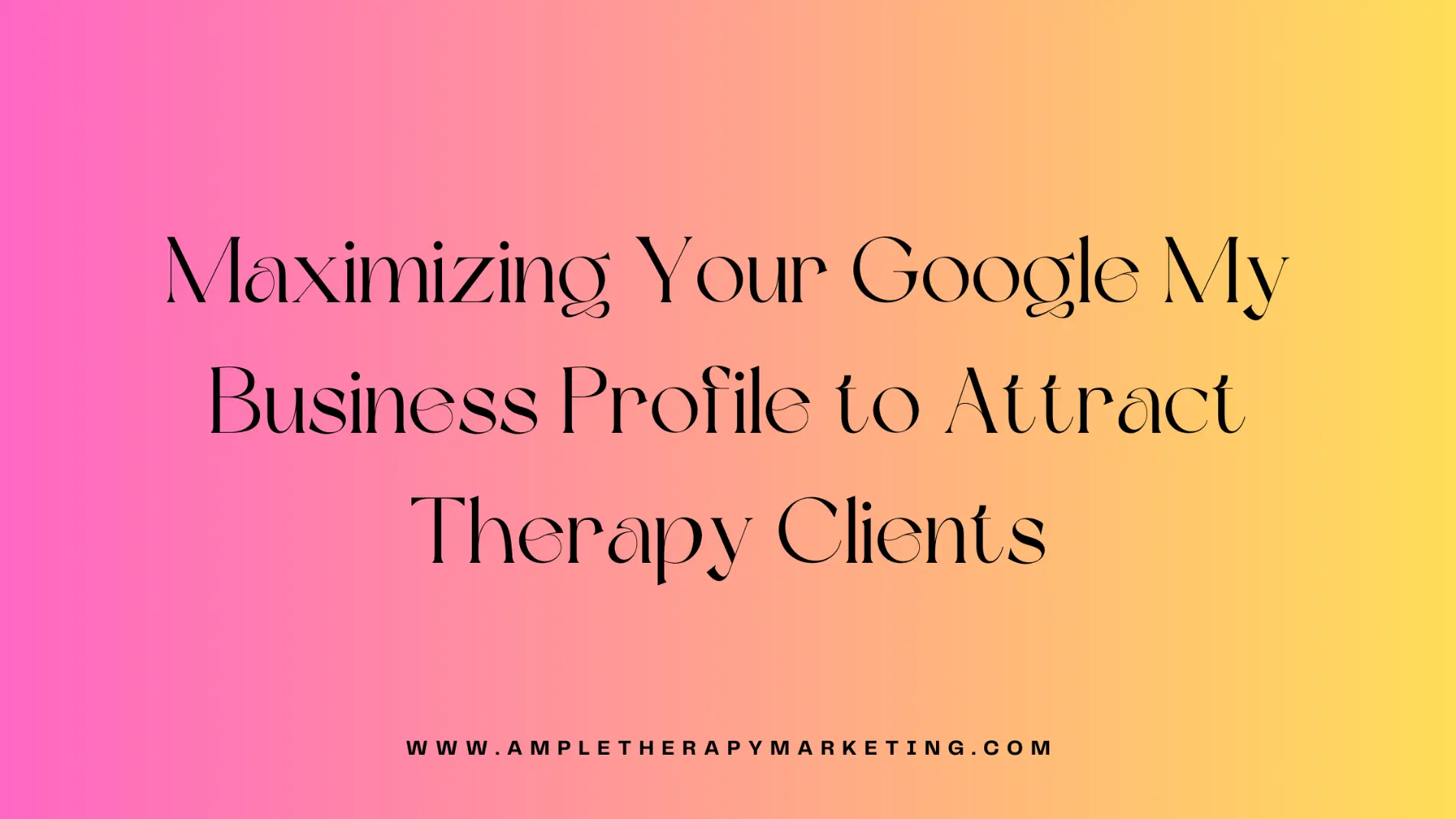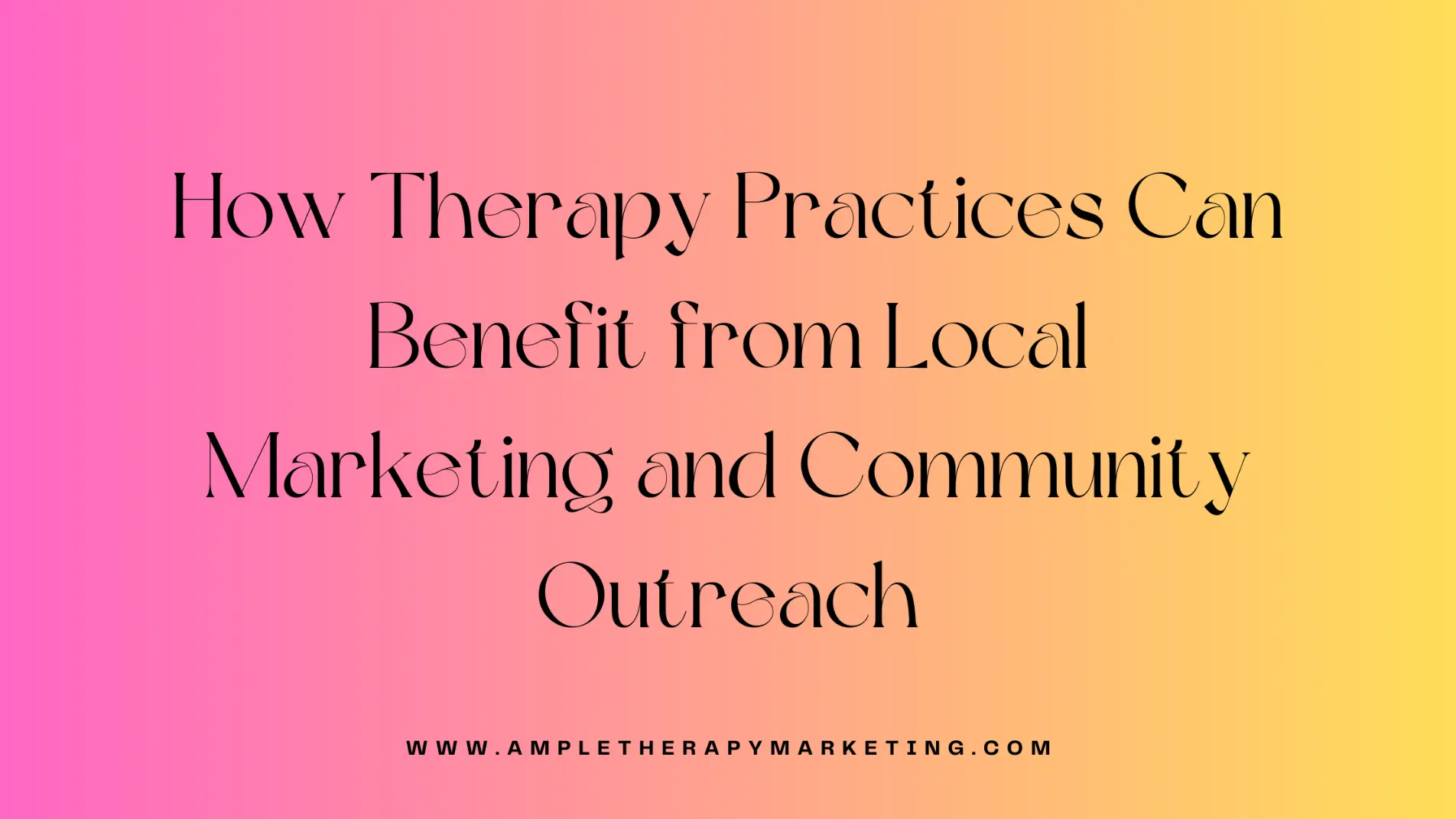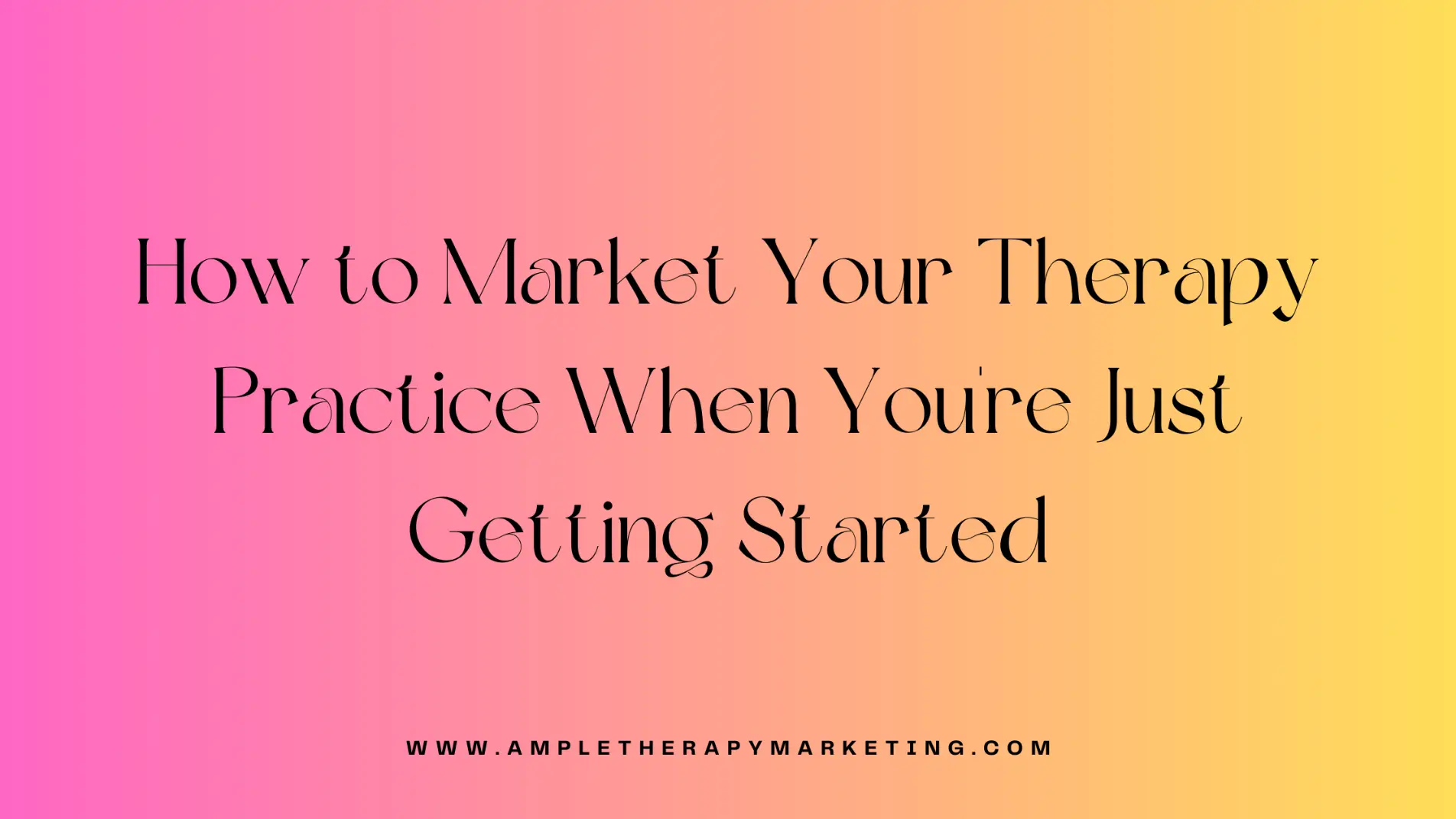Introduction
In today’s competitive therapy market, standing out online is essential for success. As a private practice therapist, embracing the right digital marketing strategies can dramatically increase your visibility and attract more clients. At Ample Therapy Marketing, we specialize in helping therapists build an effective digital presence that connects with clients and drives growth. In this post, we’ll explore five powerful marketing strategies that will help elevate your practice. Let’s unlock the potential of digital marketing and start transforming your therapy practice today!
Strategy 1: Search Engine Optimization (SEO)
What is SEO and Why is it Essential for Therapists?
Search Engine Optimization (SEO) is the practice of improving your website’s visibility on search engines like Google. It’s crucial for therapists because most potential clients turn to search engines when looking for therapy services. A well-optimized website can rank higher, making it easier for clients to find you online. In fact, 93% of online experiences begin with a search engine, which means that if you’re not visible, you’re missing out on potential clients.
Key SEO Techniques for Therapy Websites
To start optimizing your website, focus on a few key strategies:
- Local SEO: Make sure your practice shows up in local search results. Include location-specific keywords in your website content and ensure your business is listed on Google My Business.
- Keyword Research: Identify the words and phrases that potential clients are searching for. Use tools like Google Keyword Planner to find high-traffic, low-competition keywords relevant to therapy services.
- On-page Optimization: Ensure your website’s pages are optimized with relevant keywords in titles, headers, and meta descriptions.
- Off-page SEO: Build backlinks from reputable websites to improve your website’s authority and rankings.
Tools and Resources to Improve Your SEO
There are several free and paid tools that can help with SEO efforts, such as:
- Google Search Console: Helps monitor and troubleshoot your site’s performance.
- Yoast SEO: A plugin for WordPress that guides you in optimizing content.
- Moz: Offers keyword research and link-building tools to boost your SEO.
Strategy 2: Content Marketing (Blogging & Resource Creation)
How Blogging Can Position You as an Expert
Blogging is an effective way to showcase your expertise and connect with potential clients. When you write about topics your ideal clients care about, you establish yourself as an authority in your field. Content marketing is essential in building trust—clients are more likely to choose you when they find your advice valuable. Therapists who blog regularly see up to 55% more website traffic than those who don’t.
Creating Valuable Content That Resonates with Your Ideal Clients
When creating blog content, aim to address the pain points of your target audience. Think about the challenges they face and the questions they might have about therapy. Writing about common mental health issues or self-improvement tips can help build an engaged readership. For example, topics like “How to Cope with Anxiety” or “What to Expect in Your First Therapy Session” will resonate with your audience.
Best Practices for Writing Engaging Blog Posts
- Use simple, clear language: Avoid jargon to make your content accessible.
- Write for your audience: Focus on the needs and interests of your clients.
- Call to Action: Always include a CTA, like scheduling an appointment or reading another blog post, at the end of your posts.
Repurposing Content for Maximum Reach
Repurposing your blog content into other formats, such as videos, podcasts, or downloadable PDFs, can extend its reach. You can even share snippets of your blog posts on social media to drive traffic back to your website.
Strategy 3: Social Media Marketing
Why Social Media is Vital for Growing Your Therapy Practice
Social media offers an incredible opportunity for private practice therapists to reach a wider audience. Platforms like Instagram, Facebook, and LinkedIn allow you to connect with potential clients in an informal, engaging way. According to a 2024 report, 60% of people use social media to search for health information, making it an important tool for attracting clients. If your therapy practice isn’t on social media, you may be missing out on valuable connections.
Which Platforms Should You Focus On?
Choosing the right platforms is key to reaching your target audience.
- Instagram is ideal for creating visual content, such as infographics, quotes, and short videos.
- Facebook allows for more in-depth posts, community building, and paid advertising.
- LinkedIn is perfect for networking with other health professionals and establishing credibility.
Crafting Engaging Posts That Attract Clients
The key to successful social media marketing is creating content that engages, educates, and inspires. Share tips, client testimonials (with permission), and behind-the-scenes glimpses of your practice. Incorporate emotional and empathetic language to resonate with your audience, showing that you truly care about their well-being.
How to Use Stories, Videos, and Live Sessions to Connect with Your Audience
Leverage Instagram Stories and Facebook Live to create real-time engagement. These tools are great for sharing updates, hosting Q&A sessions, or giving brief tips. Video content is especially effective in therapy, as it allows potential clients to see your personality and approach before making contact.
Strategy 4: Google My Business Optimization
Setting Up and Optimizing Your Google My Business Profile
Google My Business (GMB) is one of the most effective ways to increase your local visibility. This free tool allows your practice to appear in Google Search and Maps, which is essential for attracting local clients. Ensure your profile is complete with your business name, address, phone number, website, and hours of operation.
How GMB Affects Your Local Visibility and Reputation
Optimizing your GMB profile increases the chances that your practice will appear in the “Local Pack” at the top of search results. This is especially important for therapy practices, where local clients are key. Additionally, 72% of consumers who search for local businesses visit them within 5 miles, so being visible in local search results is crucial for your success.
Collecting and Responding to Reviews to Build Trust
Online reviews significantly impact your practice’s reputation. Actively encourage satisfied clients to leave positive reviews on your GMB profile. Responding to reviews—both positive and negative—shows that you value client feedback and helps build trust with potential clients.
Using Google Posts to Keep Potential Clients Updated
Google Posts allow you to share updates, offers, or blog articles directly on your GMB profile. Regularly posting about upcoming workshops, new services, or blog updates helps keep your profile fresh and relevant in search results.
Strategy 5: Paid Advertising (Google Ads & Social Media Ads)
When Should Therapists Consider Paid Advertising?
Paid advertising, when done correctly, can be an effective way to grow your therapy practice quickly. Google Ads and social media ads (Facebook and Instagram) allow you to target specific demographics, interests, and behaviors. If you’re looking to attract clients fast or promote a special offer, investing in paid ads can help you get the word out.
Overview of Google Ads and Facebook Ads for Therapy Practices
Google Ads targets users actively searching for therapy services, making it highly effective for local leads.
Facebook Ads let you target users based on detailed demographic data and interests, such as individuals interested in mental health. Both platforms offer robust tools to track ad performance and adjust your strategy for better results.
Setting Up Your First Ad Campaign
Start by defining your goal: Is it more website traffic, phone calls, or appointment bookings? Choose your target audience carefully, and create an ad that resonates with them. Be sure to include a clear call to action, like “Book Your Consultation Today.”
Budgeting and Targeting to Maximize ROI
Therapists should start with a modest budget and scale as they see results. Monitor your ad performance regularly to identify which demographics are most likely to convert. Adjust your targeting, messaging, and budget to maximize your return on investment (ROI).
Tracking and Optimizing Your Ad Performance
Use analytics tools (Google Analytics, Facebook Insights) to track your ad performance. Look at metrics like click-through rate (CTR), cost per conversion, and return on ad spend (ROAS) to determine what’s working and make necessary adjustments.
Conclusion
In conclusion, digital marketing is an essential tool for private practice therapists who want to grow their client base and establish a solid online presence. By implementing SEO, content marketing, social media strategies, Google My Business optimization, and paid advertising, you can drive meaningful results and attract more clients. Consistency and data-driven decisions are key to long-term success.
At Ample Therapy Marketing, we specialize in helping therapists navigate the digital world and grow their practices with customized marketing strategies. If you’re ready to take your therapy practice to the next level, contact us for a personalized marketing plan today.
For more information, you can visit our services page, explore our resource page, and check out our consulting page. To see how we’ve helped other practices, take a look at our portfolio page, or dive into our blog page for additional tips. Don’t forget to sign up for our newsletter for the latest updates and marketing advice. Check out our courses as well
Have any questions? Reach out to us directly via email at hello@ampletherapymarketing.com or visit our contact page

